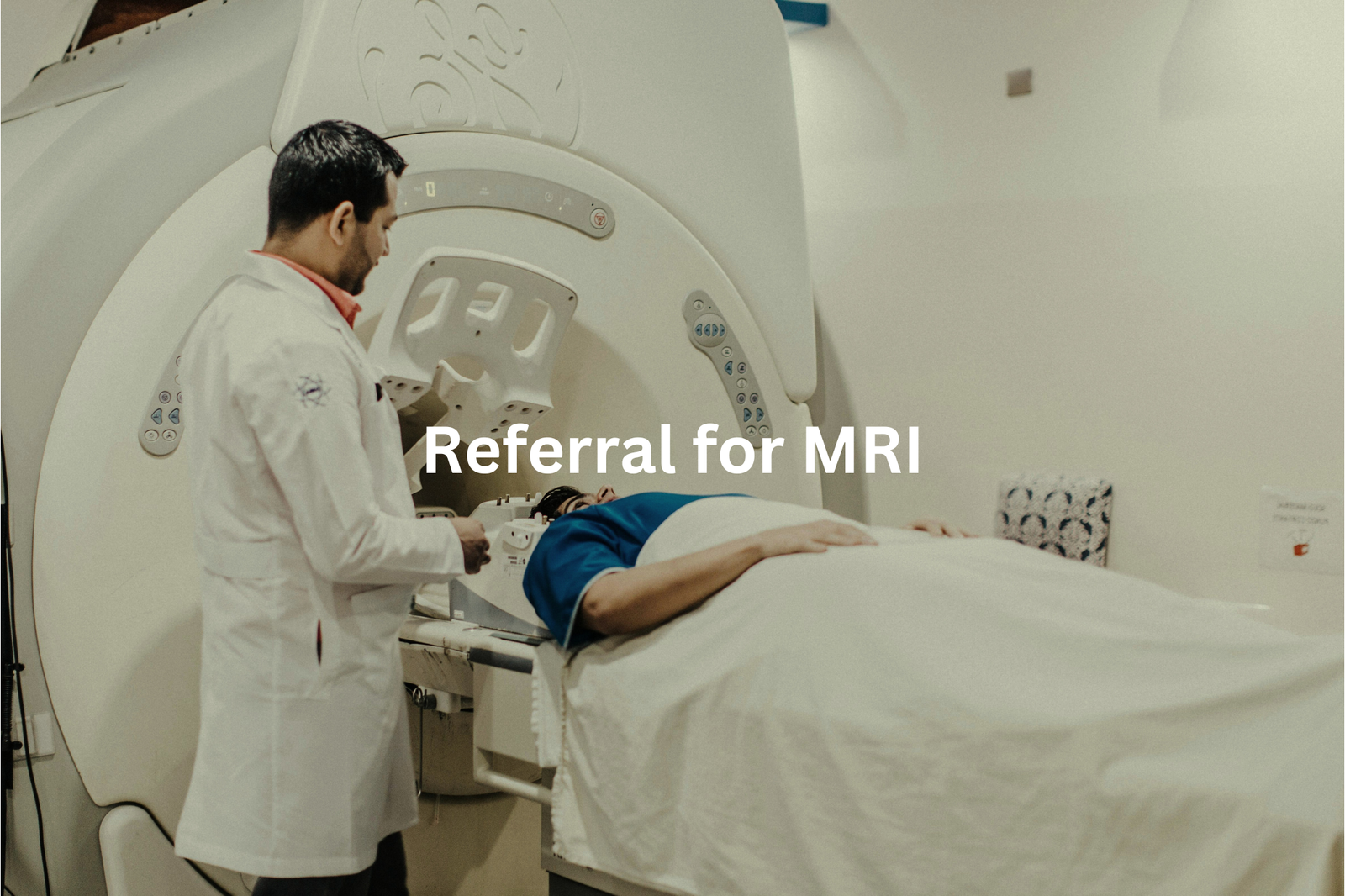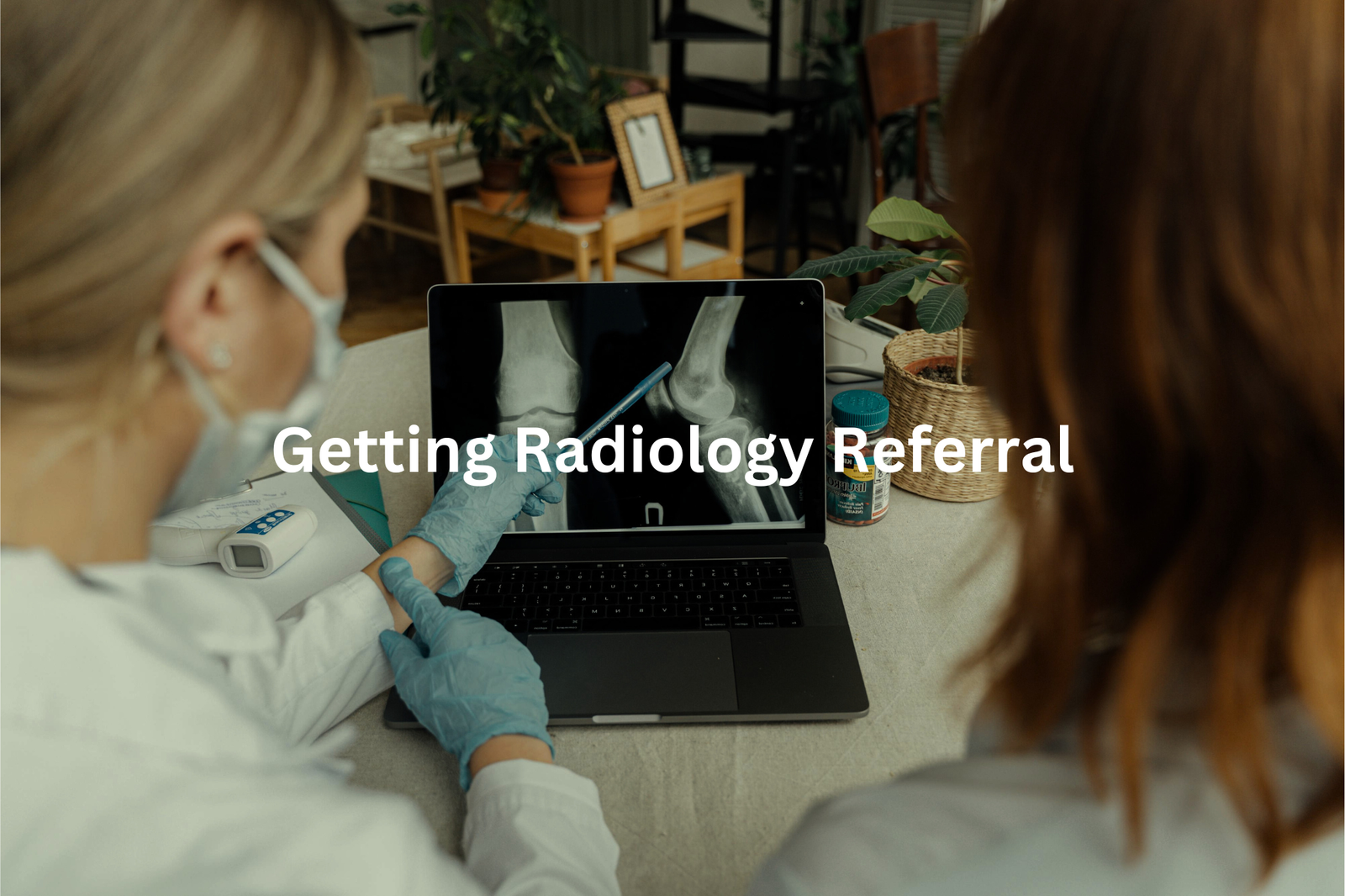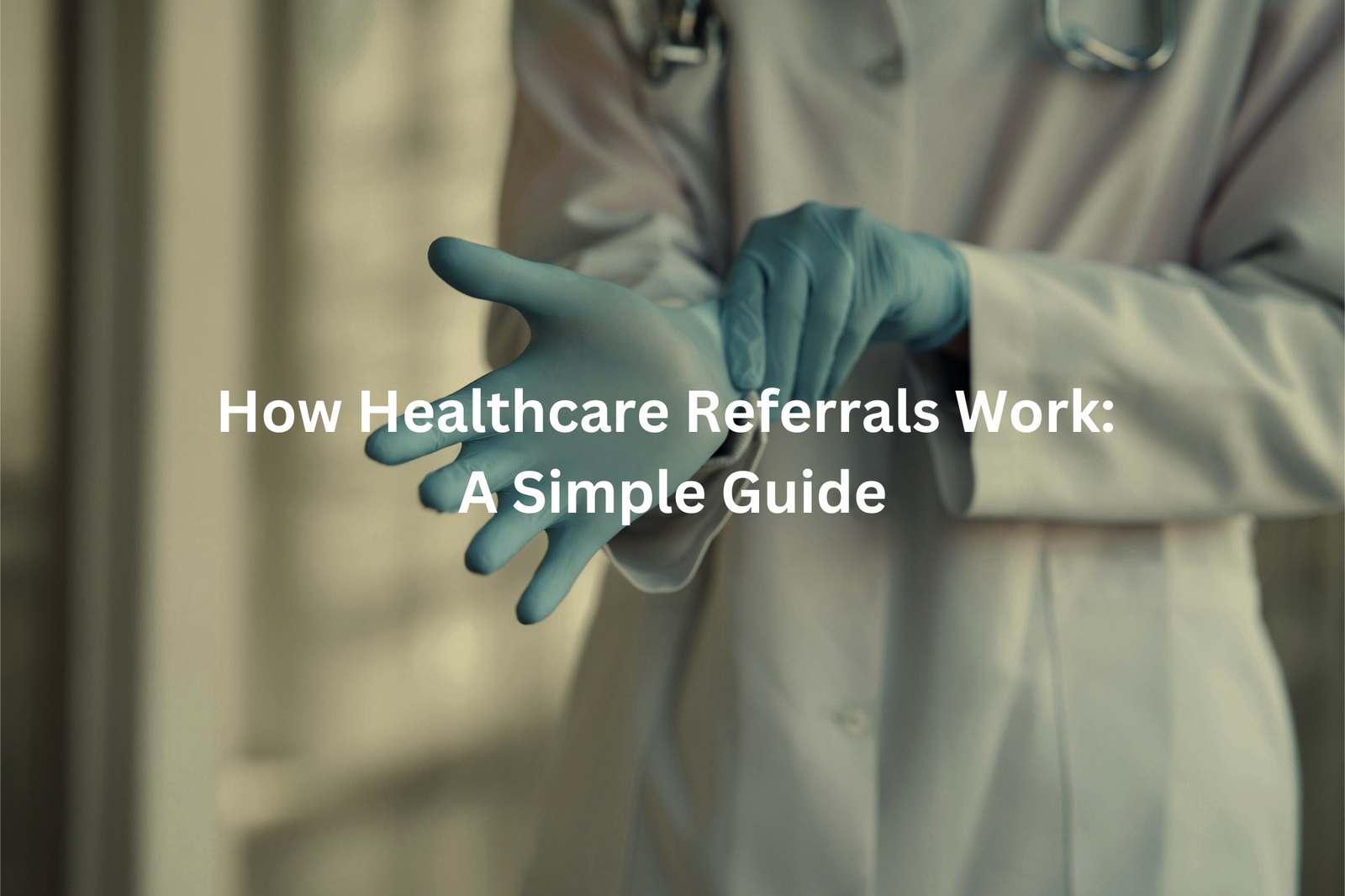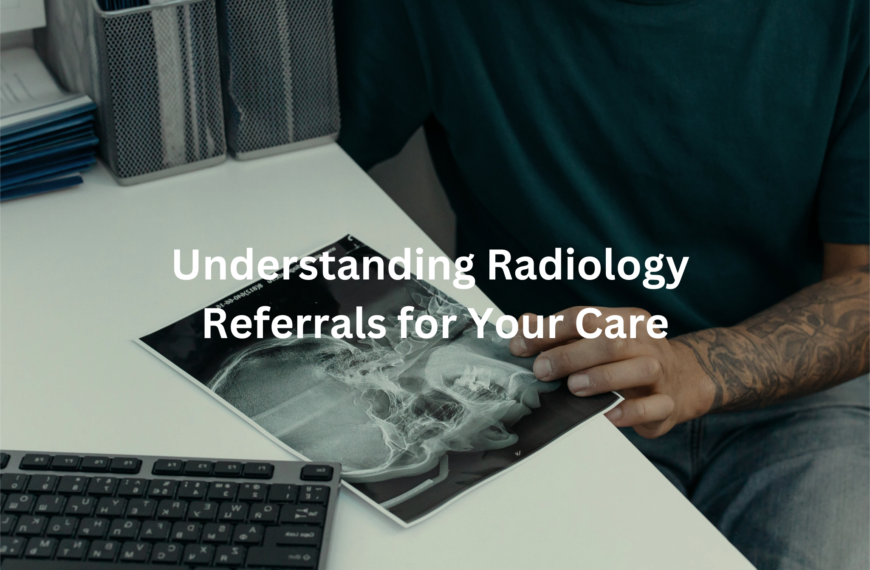Ever wondered how referrals work? Discover why they’re crucial for accessing the best healthcare services.
When I think about the referral process in healthcare, I remember my visit to the doctor last year. I had a sore knee that just wouldn’t go away. My doctor took a look and said, “We need to get some X-rays.” That’s how I learned about referrals! A referral is like a ticket that lets you see a specialist or get special tests.
It helps ensure you get the right care for health issues. So, if you’re curious about how the referral process works in healthcare, keep reading! You never know when you might need to understand it better.
Key Takeaways
- Referrals help connect patients to the right specialists for their health needs.
- Radiology referrals are common for tests like x-rays, MRIs, and CT scans.
- Medicare has specific guidelines for managing referrals and payments.
Radiology Referrals
Sometimes when you’re sick and visit your GP, they might say you need extra tests or to see a specialist. This is called a referral. It’s like a note that tells the specialist or radiologist what’s going on and what needs checking(1). For example, if you need an X-ray or an MRI scan, the GP writes a radiology referral to help you get it done.
In Australia, about 40% of people who see a GP are referred to a specialist. Medicare, which helps cover medical costs, spends over $1.3 billion every year on these specialist visits. Usually, a GP referral lasts 12 months, so you don’t need a new one every time you visit the same specialist. That’s convenient.
After seeing the first specialist, about 30% of people might need another referral for further treatment. It’s like a chain of care. The government is even working on digital referrals to make the process faster and easier. If you ever need a referral, just ask your GP—they’ll guide you through it.
How Referrals Work
Referrals are like maps for medical care, sketched out by doctors who’ve listened carefully to what’s wrong. They’re not fancy or mysterious—just a practical way to get patients closer to an answer.
Here’s how they work:
- Symptoms first. A doctor starts by asking about your symptoms and maybe doing a quick check-up(2).
- The next step. If something needs more attention—like imaging or a specialist visit—they write a referral explaining why.
- Details matter. These notes might include how long the problem’s been around or what treatments you’ve already tried.
I remember Lucy, who sprained her wrist slipping on wet tiles. Her GP wrote a referral for an X-ray, including a note about the swelling and tenderness near her thumb. She took it to the imaging centre, and within an hour, they spotted a hairline fracture. The referral wasn’t flashy, but it pointed her straight to the help she needed.
Sometimes referrals include extra instructions, like drinking contrast before a CT scan. Other times, it’s just a note to make an appointment with a specialist. Either way, they’re all about communication—connecting dots so nothing gets missed. If you ever get one, don’t overthink it. Ask questions if something’s unclear (even if it feels silly). Referrals aren’t just papers—they’re tools, plain and simple, to help sort out what’s going on.
Referral for X-Rays
Getting an X-ray is surprisingly straightforward, almost routine. It starts with a doctor deciding it’s necessary—maybe after hearing about a nasty fall or persistent pain. They’ll write a referral (the roadmap, really) explaining what needs to be scanned. Something like, “left wrist—possible fracture.”
From there:
- Booking in. The patient heads to an imaging centre with the referral. The staff check availability, and if it’s a quiet day, the scan might even happen straight away.
- The X-ray itself. It’s fast, usually under 10 minutes. Patients stand still while the machine uses a small dose of radiation to capture detailed images of bones or tissues. It doesn’t hurt at all.
- Behind the scenes. The images go to a radiologist—someone trained to read these pictures like a detective piecing together clues.
Lucy, a friend of mine, had her leg X-rayed after she slipped during a netball game. The staff asked her to remove her ankle bracelet (metal interferes with the scan) and had her in and out in minutes. Later, the radiologist confirmed nothing was broken, just a bad sprain. If you ever need an X-ray, the best advice? Wear comfy clothes without zippers or buttons, and don’t forget the referral. It’s not a big deal, but those little things can make it even easier.
Referral for MRI

It starts with a referral. A doctor decides that something—headaches, back pain, a dodgy knee—needs a closer look. Not with an X-ray, but with an MRI. This test uses strong magnets and radio waves to create incredibly detailed images of the body. No radiation involved. The referral isn’t just paperwork; it’s a map, pointing radiologists exactly where to focus.
The MRI process might seem straightforward, but there are steps involved:
- Get the referral. Your doctor writes it up, specifying what needs imaging (brain, spine, joint).
- Book an appointment. This can sometimes mean waiting a week or two, depending on the centre’s schedule.
- Prepare for the scan. Remove anything metal—jewellery, belts, even bras with underwire.
- Stay still in the machine. It’s noisy (banging and buzzing) and might feel tight, but staying calm helps.
Inside the machine, things get technical. The magnets line up hydrogen atoms in your body, radio waves disturb them, and the machine captures the signals they give off when they settle back. This creates the images that radiologists pore over to find what’s causing trouble.
Take my cousin Ben. His ankle was still swelling six months after a sports injury. X-rays showed nothing, but the MRI found a torn ligament, clear as day. That scan changed everything—proper diagnosis, proper treatment. If you’re ever sent for an MRI, remember this: bring comfy clothes, leave metal at home, and be ready to lie still. It’s an hour of inconvenience for answers you might not get otherwise.
Referral for CT
A CT scan can feel like a small miracle. It’s one of those tests where technology peeks inside the body without cutting it open. Doctors usually recommend it when they need more than what an X-ray can show but less detail than an MRI. Like other scans, it starts with a referral.
Here’s how it usually goes:
- The doctor explains the need for a CT. They’ll say why it’s helpful and fill out a referral, noting what part of the body needs scanning.
- Contrast might be involved. This is either a drink or an injection that makes certain areas light up clearly in the pictures. My cousin had to drink it before her stomach scan—it tasted odd, she said, like medicine mixed with chalk.
- The machine works like magic. It spins around the body, taking pictures from all angles. These get combined into “slices” (thin cross-sections, like cutting bread).
The best part? It’s quick. Most scans only take a few minutes, though the prep might take longer. My cousin’s scan caught what was causing her pain—an inflamed appendix. The doctors got her into surgery fast. If you’re going in for a CT, here’s what helps: wear comfy clothes without metal, follow the contrast instructions (if there are any), and stay still during the scan. That’s all. It’s not as noisy as an MRI, and you’re in and out before you know it.
Radiologist Referral Guide
Radiology referrals are more than just paperwork. They’re like a quiet conversation between your doctor and the radiologist, laying out the details of your health. It’s a bit like handing over a map—not a complete guide, but enough to find the way.
Here’s how they work:
- They explain the issue. Whether it’s chest pain, a lingering cough, or an injury, your doctor describes the problem. This helps the radiologist know where to focus.
- They include history. Previous scans, surgeries, or anything relevant gets mentioned. A radiologist can’t guess this stuff, so every detail counts.
- They outline the plan. It’s not just “take a picture”; it’s about specifics. Do they need an X-ray, MRI, or CT? Does it require contrast?
I once saw this play out with my neighbour. He’d been having sharp chest pain, and his referral requested a CT scan with contrast. The notes said the pain had lasted two weeks, was worse when he breathed deeply, and might be related to his heart. Turns out, it was a pulmonary embolism—a blood clot in the lung. The referral gave the radiologist enough to look in the right spot, and it probably saved his life(3).
If you ever need a scan, make sure to ask your doctor about the referral. What’s in it? What are they looking for? It’s your health, and a good referral can make all the difference.
Getting Radiology Referral

Getting a radiology referral usually starts with a visit to your GP (general practitioner). They’ll ask about your symptoms, maybe do a quick exam, and then decide if you need imaging tests like an X-ray, CT scan, or MRI. If they think it’s necessary, they’ll write up a referral form. That form is really important—it’s like your pass to get the imaging done. You’ll need to take it to the radiology clinic or hospital.
Now, here’s something to think about. If you’ve got private health insurance, it’s worth checking if it covers the cost of the test. Some tests can be pricey, and knowing what’s covered can save you a lot of hassle. My uncle had to get an MRI once, and he made sure to call his insurance first. Turned out, they covered most of it, which was a huge relief. So, keep your referral safe, check your insurance, and don’t be afraid to ask questions. It makes the whole process smoother.
Referral Process Explained
The referral process is a way to make sure patients get the right care when their doctor thinks extra help is needed(4). It starts with the doctor deciding that a specialist or specific test, like imaging, is necessary. They then write a referral form (this is an official document) that explains the patient’s health concerns and what kind of care or test is required.
Once the referral is written, the patient needs to book an appointment with the specialist or imaging centre. This step is really important. The referral form acts like a pass—it’s what allows the specialist or testing centre to provide the service. Without it, the appointment might not go ahead, which can cause delays in treatment.
So, always double-check before heading to the appointment: referral form? Check. It’s a small thing, but it helps everything run smoothly. Knowing these steps can make the process feel a bit less overwhelming.
Need for Referrals
Referrals are really important in healthcare for a bunch of reasons. They make sure patients get to the right specialists for their health needs, which is super helpful. It’s like having a map to guide you to the right place. Referrals also help the healthcare system run better by sending people to the right services. This can stop unnecessary tests or treatments and save time for everyone.
Specialists are trained to handle specific problems, which means they’re the best people to help with certain conditions. For example, when my mate needed to see a dermatologist for a skin issue, her GP gave her a referral. It made everything easier—she didn’t have to guess who to see, and she got the right care much faster.
If you ever need a referral, don’t hesitate to ask your doctor. It’s there to help you get the best care possible without wasting time or resources.
Medicare and Referrals
Sources: Avant Mutual.
Medicare can be a bit tricky sometimes, especially when it comes to referrals. If you’re on Medicare and need to see a specialist, you might need a referral from your GP (general practitioner). Without it, Medicare might not cover the cost of the visit, which could leave you with a bill you weren’t expecting. That’s not a fun surprise for anyone.
For example, let’s say you’ve got a sore knee and want to see an orthopaedic specialist. If your Medicare plan requires a referral and you skip the GP step, you might end up paying out of pocket. It’s a small step that can make a big difference.
Medicare has these rules to make sure care is coordinated properly. It’s not just about saving money; it’s also about making sure you’re getting the right care from the right people. So, before booking that specialist appointment, take a moment to check if a referral is needed. It’s a simple way to avoid extra costs and keep things running smoothly.
FAQ
What is the process for urgent referrals to health professionals?
When a patient’s condition requires urgent attention, health professionals can make urgent referrals to get them access to specialist services as soon as possible. This helps ensure patients with acute or critical health issues receive the care they need right away, whether it’s for a mental health crisis, emergency surgery, or other time-sensitive medical needs.
How do I schedule an outpatient appointment with a specialist?
To schedule an outpatient appointment with a specialist, you’ll need a referral from your primary care provider. They can connect you with the right specialist based on your specific health service needs. Your provider will handle the referral process and help you coordinate an appointment time that works for you.
What mental health services are available through the health system?
The health system offers a comprehensive range of mental health services, including outpatient clinics, inpatient mental health admissions, and support from allied health professionals like counsellors and psychologists. If you’re dealing with mental health concerns, you can speak to your doctor about a referral to access the right mental health services for your situation.
How do I get a referral to see a specialist doctor?
To see a specialist doctor, you’ll need a referral from your primary care provider. They can assess your condition and provide a referral to the appropriate specialist based on your health needs and the referral guidelines. Your provider can also offer advice on the type of specialist you should see and help coordinate your specialist appointment.
What should I know about Statewide Referral processes?
The Statewide Referral service connects patients with the right health providers across the state, ensuring they can access the specialist services they require regardless of their location. This includes clear referral pathways, statewide referral criteria, and analysis of referral rates to identify any avoidable or inappropriate referrals. Your provider can guide you through the Statewide Referral process.
Conclusion
Getting the right healthcare often means going through the referral process. This helps you meet the right specialists who can take care of your health needs. Knowing how referrals work can make your visits to doctors and specialists easier. It’s like having a map to guide you. So, the next time you need a referral, just ask your doctor, and you’ll be ready to see the right person for your care!
References
- https://www.instantconsult.com.au/online-referrals/radiology/
- https://www.healthdirect.gov.au/what-is-a-referral
- https://www.auntminnie.com/practice-management/associations/article/15631652/referral-guidelines-for-imaging-exams-launched-in-australia
- https://www.blua.bupa.com.au/ageing-well/health-checks/the-specialist-referral-process-explained




